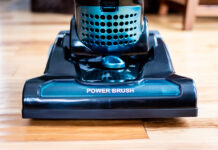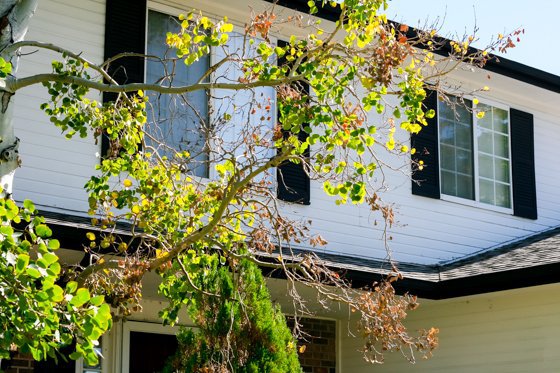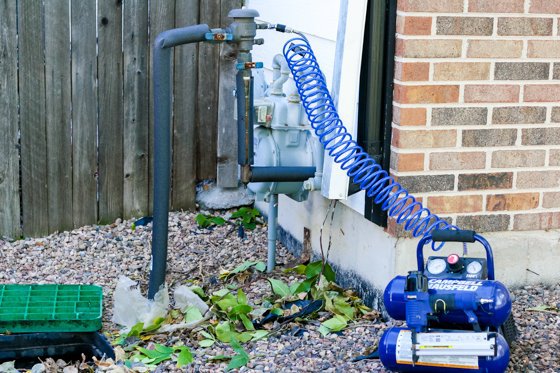As we get further into the fall months, homeowners must prepare for the inevitable: winter. We’ve created an easy checklist to tackle with your spouse as the weather gets cooler, and the leaves start falling on the ground.
Those of us living in a part of the world that gets snow have to worry about the ground freezing, and all the possible repercussions that may come along with that, from your sprinkler, to your furnace. But never fear! With a bit of determination and proper time management skills, the projects are easy enough to spread out over a season. Some of the items are best to hire a company to do, while others are a great DIY project. Check it out!
1. Trim your dead tree branches:
Before winter snow arrives to weigh everything down, trim the branches that never fully revived themselves over the summertime. Ice can cause even the strongest branch to snap, and you wouldn’t want to risk it falling. Also, make sure to check that no branches could cause potential damage to your home in any way. If they are hanging close to your roof, play it safe and cut them off.
2. Clean your rain gutters:
Drag out the ladder, and make sure your rain gutters are clear. You may have to do this a few times during the fall, depending on your tree coverage in your lawn (or your neighbors!) You want your rain gutters clear of all debris so that the moisture has someplace to run-off to, rather than sitting on your rooftop, or running down the side of your home, potentially causing damage to your home’s foundation and causing basement leaks.
3. Aerate and overseed your lawn:
Because of the cooler weather, watering your lawn is actually more effective because you won’t be worried about possible drought, or as much evaporation because of the hot sun. That makes fall the best time to seed your lawn. You’d want to check with your local nursery on what type of seed is best for your specific location and soil type. Plan accordingly, however, as when you seed you will have to water a bit more. You may see a jump in your monthly water bill because of this tradition.
You aerate your lawn so that you can get more water down to the root of the seed. If you plan to overseed your lawn, you’d want to aerate it first, so that the seed will get planted further into the ground, rather than resting on the top and waiting for it to settle in. Doing these two tasks in conjunction is ideal. You can rent an aerating machine at your local hardware store, or outsource it typically for less than $100.
If you do not choose to seed your lawn, you should plan on winter fertilizing at a minimum. If you plan on aerating and seeding, talk to your local nursery about proper fertilization depending on your soil type and climate.
4. Winterize your windows:
To help keep heat inside your home and not escape through your windows, an easy and cost effective solution is to winterize your storm windows with an insulation kit. An insulation kit is a clear polyurethane sheet that essentially creates an insulating barrier to keep the winter outside, and the warmth inside. Kits usually include everything you need to properly insulate. If you’re unable to do all your windows, focus your efforts on the biggest windows in your home, such as patio doors, or bay windows.
5. Disconnect your hoses:
Take the hose off and drain your hose, and close off all the outdoor faucets. Make sure that your faucet is not dripping water after you disconnect the hose. This is important because if they are connected and/or leaking water, it could freeze and the pipe could burst in your home, causing damage to your basement from flooding.
6. Blow out your sprinklers:
If there is water left in your sprinkler system pipes and the ground freezes, you run the risk of having your piping system burst. Unless you or your significant other are knowledgeable regarding irrigation systems, it’d be best to outsource this task and pay to have it done professionally. Typically, the more zones your sprinkler system has, the more expensive it will be. However, this task can usually be done professionally for less than $100.
7. Maintain your furnace:
The first step in maintaining your furnace is to swap out your filter. Depending on the furnace filter recommendation, this should actually be done every 30-90 days. Filters will obviously fill with dust, and having a clean filter will prolong the life of your furnace considerably.
You’ll want to call a furnace technician to have them come inspect your furnace. They will clean your furnace, check your pilot light and gas lines (if it’s a gas furnace) and possibly clean your duct work. This will cost you some money, but it’s better to be proactive with your heating system, rather than ignore it and have it malfunction with a foot of snow on the ground.
8. Prepare for winter:
There is nothing worse than getting your first snowfall of the season and realizing your trusty snow shovel snapped in half last season and you forgot to replace it. Make sure you have a good shovel, and some ground salt. If you have a snowblower, start it up before the first snow and make sure it has sufficient fuel.
On the same page, drain the gas tank in your lawn mower, and disconnect the spark plug to easily winterize it until you need it again in the spring.
Photo Credits: Dreams to Do, The Memoirs of Megan












































